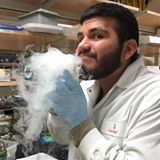Celebration of Scholars
Distinguishing Between Bioaccumulation and Biomagnification using Macroinvertebrates and Triclosan
 Name:
Banni Lopez Zavala
Name:
Banni Lopez Zavala
Major: Environmental Science
Hometown: Kenosha
Faculty Sponsor:
Sarah Rubinfeld
Other Sponsors:
Type of research: Senior thesis
Funding: SURE
